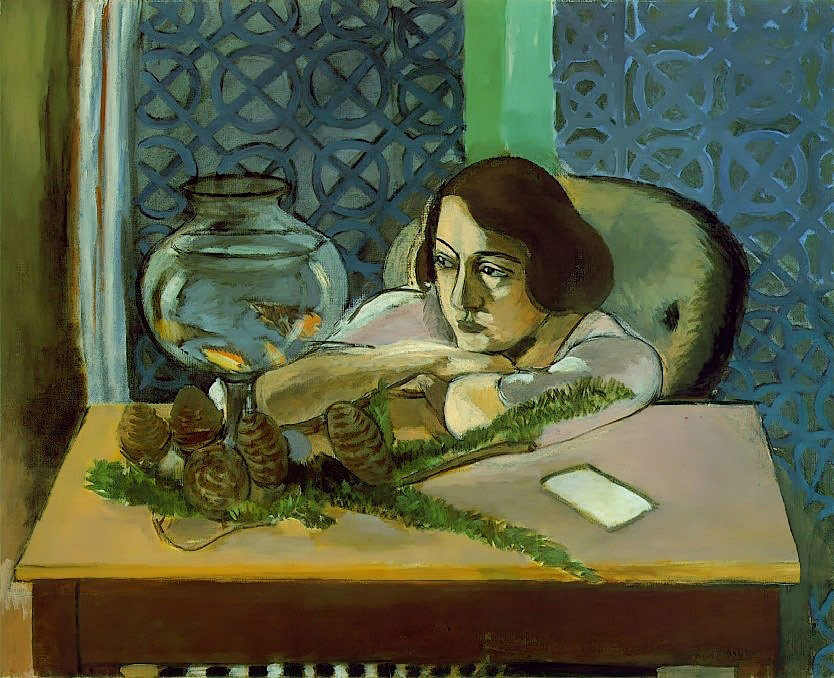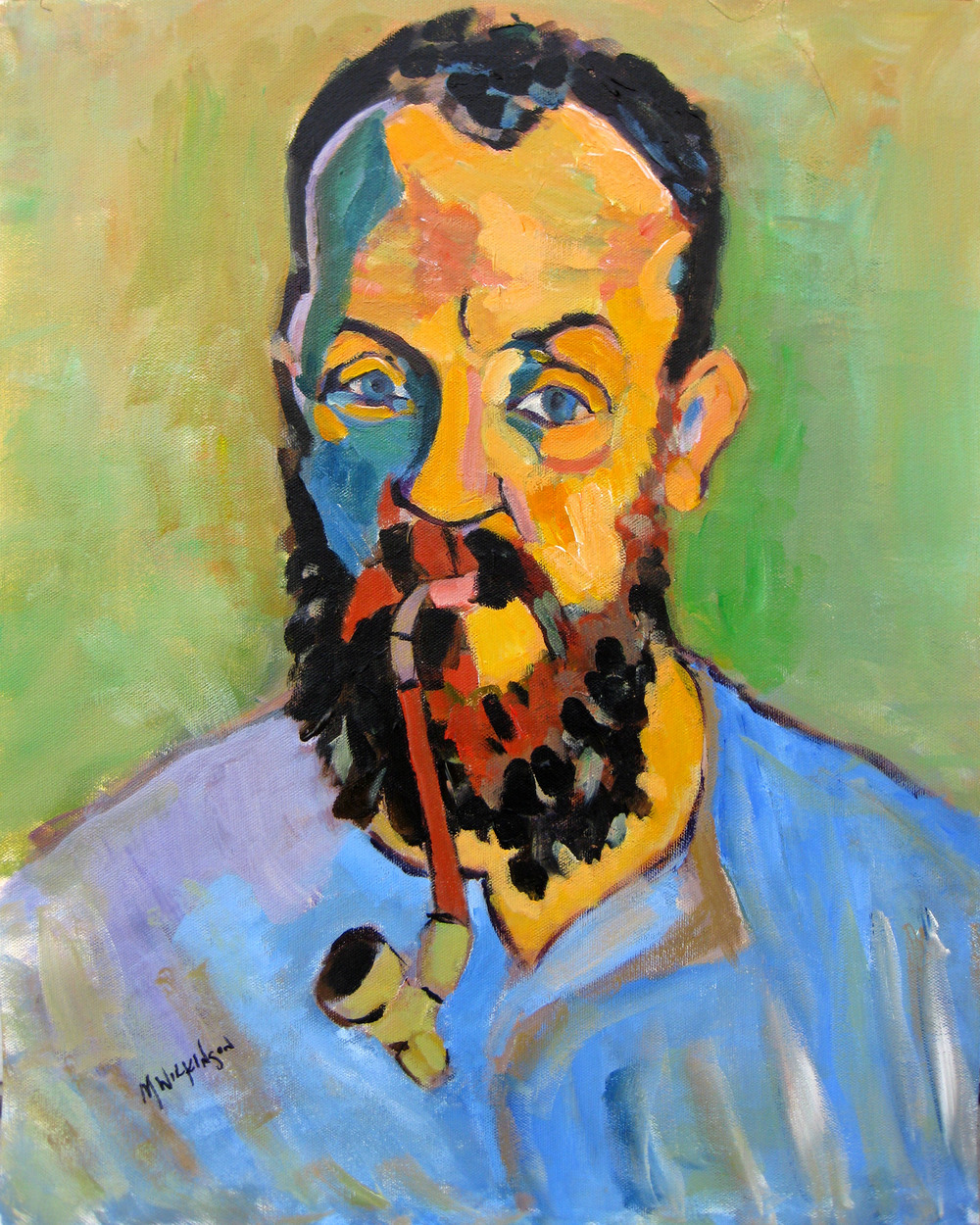



Woman before an Aquarium
oil on canvas • 80.7 x 100 cm
Henri Matisse was fascinated by the cultures of North Africa and the Middle East. In 1903 he visited an Islamic art exhibition at the Musée des Arts Décoratifs, Paris; in 1910 he traveled to Munich for a major display of Islamic objects and then to Spain to see Moorish architecture. He also collected brilliantly colored and richly ornamented textiles, pottery, and tiles. It was, however, the physical experience of these lands that proved to have the greatest impact on Matisse’s vision and creativity. In May 1906 and for long periods between January 1912 and February 1913, he visited North Africa. There, he came to understand the unique quality of light and its effect on the perception of color and space.
Even a decade later, while Matisse lived in the southern French city of Nice, these experiences would continue to transform his work. In Woman before an Aquarium, the paneled screen and goldfish are pictorial elements drawn from Matisse’s Moroccan journeys. Moreover, the artist’s own transformation—the "new rhythm" of his inner vision that resulted from his travels—was responsible for the particular luminosity, cool palette, and intimate effect of this canvas. Matisse was entranced by the golden light and sea-soaked atmosphere of Nice, and his paintings from this period demonstrate his newfound interest in an impressionistic naturalism that was not a rejection of his earlier work, but rather an effort to infuse his previous style with a "human element."
 Henri Matisse
Henri Matisse